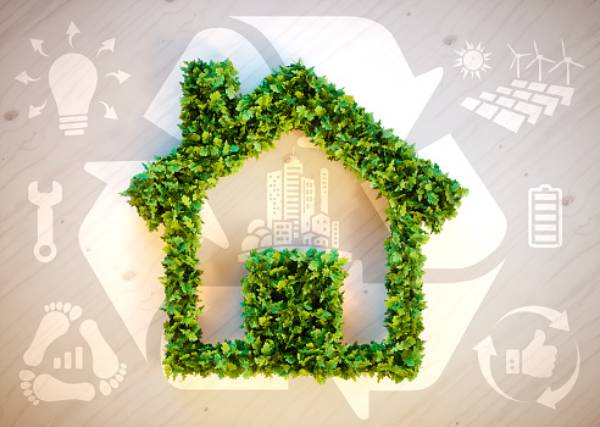
AS PRINCIPAL: RECOGNITION & RESPONSIBILITY of MODERN RECOVERY HOUSING
- Education
- November 19, 2021
BACKGROUND
In several developed countries and particularly in the US, Substance Use Disorders have become a permeating problem. Over 21.5 million people between age 12 and above as of 2014 had a Substance Use Disorder, alongside over 17.0 million individuals having alcohol use disorder. Also, illicit drug use disorder was found in approximately 7.1 million people, while both illicit drug use disorder as well as alcohol use disorder was accounted for in over 2.6 million people (Center for Behavioral Health Statistics and Quality, 2015). Mortality rate from drug overdoses had been on the increase as a result of unprecedented opioid epidemic (U.S. Department of Health and Human Services, 2016). Since year 2000, death rates arising from overdoses of drugs plummeted to 137%, alongside a 200% increased rate of deaths from overdose drug usage involving opioids – heroin and opioid pain relievers (Rudd et al., 2016).
Regardless of the debilitating and harmful societal and individual addiction costs as well as the development and proven effectiveness of treatments of substance use, only few out of those who need treatment get to receive it. Even as addiction becomes increasingly identified as a chronic condition requiring change in lifestyle and ongoing care, the majority of substance use treatment is time-limited and is likely to not involve the kind of service prioritized by clients as being crucial to their recovery (Dennis and Scott, 2007; Duffy and Baldwin, 2013). Therefore, there has been the identification of safe and stable housing as crucial to recovery. Studies show that only about 32% of persons who were enrolled for substance use treatment are marginally housed for 30 days prior to entry into treatment (Eyrich-Garg et al., 2008).
CONCEPTUAL DEFINITION OF RECOVERY HOUSING
Recovery housing represents a promising mechanism of service delivery towards ensuring that people undergoing recovery have a drug/alcohol free experience as well as a supportive living environment for the promotion of health, purpose and wellness alongside fostering a lifestyle denoted by citizenship, sobriety and personal health (SAMHSA, 2012). Recovery housing encompasses a service delivery modality that concurrently looks into the issue of housing needs and social support of persons under recovery from substance use disorders. Recovery housing is popularly used after residential or inpatient treatment, although it could as well be used during or after outpatient treatment or completely as a treatment alternative. Recovery houses (the physical residences or structures where people live) are called by diverse names – sober homes, recovery homes, oxford houses, sober living houses – but in the general term, they’re referred to as safe, sober and healthy living environments promoting recovery from the use of drugs, drinking of alcohol and other related problems. Access to stable and supportive housing is identified in the field of addiction as a crucial component of the establishment and maintenance of recovery from substance use disorders.
BEST PRACTICES/RECOMMENDED APPROACHES
On 24th October 2018, SUPPORT – Substance Use Disorder Prevention that Promotes Opioid Recovery and Treatment for patients and communities became signed into law by the US president, Donald Trump. Subtitle D, Ensuring Access to Quality Sober Living (SEC. 7031) of this law mandates that the Secretary of Health and Human Services shall consult targeted stakeholders (both entities and individuals) to recognize and champion the development of best practices for the establishment and operation of recovery housing.
Consider two model laws for the implementation of the suggested minimum standards:
- The ability of recovery housing to support recovery and prevent overdose, relapse and recidivism alongside the improvement of access to medication-assisted treatment.
- Identification or development facilitation of popular indicators competent enough to ooze out operators of recovery housing that are potentially fraudulent.
Identifying house settings that can advance recovery after residential treatment completion or during the receipt of outpatient treatment for substance use disorders is highly recommended.
For the delivery of the best care possible, operators of recovery house should identify the level of care services that their housing facility can deliver. Follow NARR – National Alliance of Recovery Residences, SAMHSA – Substance Abuse and Mental Health Administration and other stakeholder agencies’ recommended care levels that appropriately signifies the fundamental structural quality recovery housing blueprint as well as illustrate the continuum of support ranging from nonclinical recovery housing to clinical and typically licensed treatment, as it continuum of support ranging from non-clinical recovery housing (level I and II) to clinical and usually licensed treatment (Level III and IV).
GUIDING PRINCIPLES
- Consider SUPPORT – Substance Use Disorder Prevention that Promotes Opioid Recovery and Treatment’s Recovery Housing Definition
Understand the conceptual definition of recovery housing by SUPPORT and be guided accordingly through it. The legislation by SUPPORT defined “recovery housing” as an alcohol and illicit drug-use free shared living environment with central focus on peer supports and connection to services that promote sustained recovery from substance use disorders.
- Carve out a clear operational definition
Recovery housing should as a matter of necessity possess a distinctly clear definition of operation that glaringly delineates service types offered alongside the intensity or degree with which these services are offered.
- Realize that Substance Use Disorder is a chronic condition demanding variety of recovery supports.
Transitioning from active addiction into sustainable recovery is most times difficult and emotionally demanding for quite a lot of people with substance use disorder. NIDA (2018) indicated that the relapse rates for substance-use disorders is approximately 40-60%, and that relapses could signify the necessity to reexamine a person’s course of treatment, as relapses can be very dangerous and, in many instances, deadly. The first 12 months of this transitional period prior to the onset of sustained full remission, sometimes referred to as early recovery, is a crucial period during which people contend with raw core clinical issues such as family history, unresolved trauma, grief and loss, emotional immaturity, low frustration tolerance, and other factors that make them susceptible to relapse. However, a study conducted by Moos & Moos (2006) determined that individuals with more ‘social capital’ are more likely to show improved outcomes for short term remission. Therefore, recovery houses are uniquely qualified to assist individuals in all phases of recovery, especially those in early recovery, by furnishing social capital in addition to recovery supports.
More importantly, a support network consisting of peers with lived experience alongside staff trained in modern recovery housing approaches are essential to assist in recovery. This is an integral part of the community support program of recovery housing. Additionally, friends and family having no hold on abusing or use of illicit substances can constitute part of the community. Empathy, community and guidance are essential in helping people remain focused as they go through the healthy lifestyle recovery process. This is a manifestation of what is obtainable among individuals discharged from criminal justice custody, inpatient treatment, pre-treatment admittance or individuals simply seeking a safe and drug-free living environment conducive for recovery.
CONCLUSION
Safe and stable housing is primary to supporting a lifestyle in recovery and represents an advanced and effective way to augment and extend the substance use continuum of care. Applying specified guidelines for operation of recovery housing conducted by those with long-term recovery capability remains a paramount affair for operators and stakeholders for the success of those recovery housing is designed for. Intellectual understanding of recovery and recovery processes is secondary as it applies to quality and effectiveness to those providing the service. Those with lived experience and/or former residents of recovery housing who have overcome a substance use disorder are most qualified to provide this essential support.
Author – Denny M Wilson
Denny Wilson is a former recovery housing operator and author of F*ck Heroin: Keys to Winning on the Addiction Battlefield and Recovery House Rescue: The Resurgence of Superior Care in a Non-Clinical Setting.
books.dennymwilson.com

REFERENCES
Center for Behavioral Health Statistics and Quality. Behavioral health trends in the United States: results from the 2014 National Survey on Drug Use and Health. Rockville, MD: 2015. [Accessed: 2016-03-01]. (HHS Publication No. SMA 15-4927, NSDUH Series H-50).
Dennis ML, Scott CK. Managing addiction as a chronic condition. Addiction Science and Clinical Practice. 2007;4(1):45–55.
Duffy P, Baldwin H. Recovery post treatment: plans, barriers and motivators. Substance Abuse Treatment, Prevention, and Policy. 2013;8:6.
Eyrich-Garg KM, Cacciola JS, Carise D, Lynch KG, McLellan AT. Individual characteristics of the literally homeless, marginally housed, and impoverished in a US substance abuse treatment-seeking sample. Social Psychiatry and Psychiatric Epidemiology. 2008;43(10):831–842.
Rudd RA, Aleshire N, Zibbell JE, Gladden RM. Increases in drug and opioid overdose deaths — United States, 2000–2014.
Substance Abuse and Mental Health Services Administration. Results from the 2013 National Survey on Drug Use and Health: Summary of national findings. Rockville, MD: 2014.
U.S. Department of Health and Human Services. Fact Sheet: The Opioid Epidemic – By the Numbers. Washington, DC: 2016.